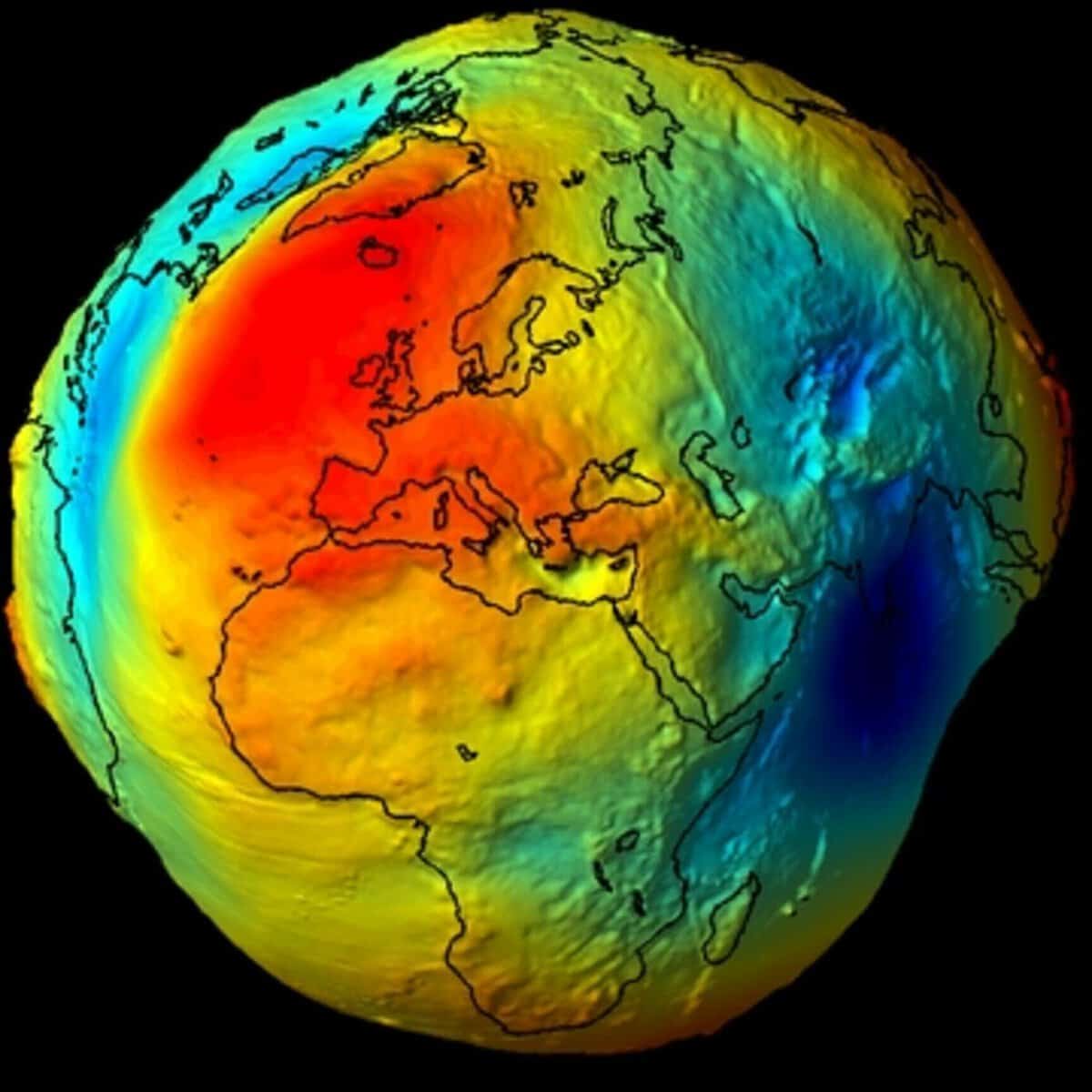During the 18th century, a scientific expedition was organized by the French government to explore the coasts of Latin America. The main goal of the participants was to conduct experiments and determine whether the earth is more similar to a flattened ellipsoid or an elongated shape. “Winterization is warm!” – the scientists exclaimed with joy. Little did they know that they would face eight years of challenges. The journey involved encounters with indigenous tribes, warfare, a volcanic eruption, and extreme cold temperatures, all in the line of duty for the surveyors. Surprisingly, the story of the Equatorial Degree Expedition remains relatively unknown in the Russian-speaking community, and I aim to change that.
Descartists vs. Newtonians
Allow your creativity to roam freely and envision an image:

This is the general pattern of the ongoing debate regarding the Earth’s shape (whether it is flattened or elongated) that has been ebbing and flowing in scientific circles throughout Europe since the late 17th century.

During the 17th century, a renowned scientist named René Descartes resided in France. Renowned for his creation of the Cartesian coordinate system, which is first introduced in school, Descartes also established an entire philosophical movement known as Cartesianism. Interestingly, both “Cartesianism” and “Cartesianism” are alternative pronunciations of the same name, Descartes.
One of Descartes’ beliefs was that the Earth is surrounded by swirling vortices that cause it to become thinner. Additionally, he hypothesized that the Earth should be slightly elongated from pole to pole, similar to the shape of a melon.
During the same period, in the late 17th century, Newton stated in his work “Beginnings of Natural Philosophy”:
“The difference in elevation between the equator and the poles on Earth is approximately 17 miles.”
Newton believed that his theory was supported by the pendulum experiments conducted by astronomer Richet. Richet traveled around the world with a precise pendulum and observed that the same calibrated pendulum rod oscillated at different latitudes with varying periodicity. This led Newton to conclude that the Earth is flattened, similar to the shape of a pumpkin. This was the prevailing belief among Newtonians at the time.


It should be noted that the discussion revolved around the slight “flattening or elongation” of the planet, a phenomenon that could barely be detected with the available observation methods. As a result, any “undesirable results” could easily be attributed to measurement errors, depending on whether one followed Cartesian or Newtonian principles. Nonetheless, the French Academy of Sciences regularly held competitions for scientific papers on the topic of Earth’s shape, providing an opportunity for scientists to showcase their ideas and compete for monetary prizes and publications.
However, let’s return to the original scene at the cafe. One might question the significance of debating about the shape of the Earth in 1733, when one could simply enjoy a drink and recite poetry.
In the era of enlightenment, it is quite straightforward: being intelligent is highly regarded, and all respectable individuals engage in mathematics or astronomy. Welcome to Café Grado: a gathering place for scientists associated with the Academy of Sciences. The more renowned you are within this community, the greater your chances of securing a position, teaching, or finding a benefactor. By the way, the young gentleman with the gentle gaze who defended Newton is none other than Marquis Emily du Châtelet. She made a special effort to join the discussion, even though women were not permitted in the café – she had to change her attire. In the future, she will establish herself as a prominent mathematician and become Voltaire’s lover (he is the inquisitive orator). For now, she is deeply captivated by binomials and her mathematics instructor: Monsieur Maupertuis, the leader of the Parisian “circle” of Newtonians.

About Maupertuis
Madame du Châtelet is depicted at her desk in this 18th-century portrait by Maurice Cantin de La Tour. The image captures the intellectual atmosphere of the time, with the books and papers scattered on the desk. Madame du Châtelet was a prominent figure in the French Enlightenment, known for her extensive knowledge in mathematics and physics.
One of the notable figures she corresponded with was Pierre Louis Moreau de Maupertuis. Maupertuis was a French mathematician and astronomer who made significant contributions to the field of mathematics and the study of the Earth’s shape. He was known for his work on the principle of least action and his expeditions to Lapland to measure the Earth’s shape.
Maupertuis’ work was controversial at the time, as it challenged prevailing theories about the shape of the Earth. His measurements in Lapland supported the idea that the Earth was an oblate spheroid, rather than a perfect sphere. This had significant implications for the understanding of gravity and the Earth’s rotation.
Madame du Châtelet was an admirer of Maupertuis’ work and corresponded with him on various scientific topics. Their exchange of ideas and knowledge contributed to the intellectual development of both individuals and the broader scientific community.
We must keep in mind that the mathematicians (and scientists in general) we are referring to are well-liked and trendy individuals. They are more akin to the “IT guys” of the 2010s rather than the “programmers” of the 90s. Pierre Moreau de Maupertuis (who is approximately 36 years old in our fictional year of 1733) is an ambitious and sociable scientist. He initially came to Paris with the intention of becoming a musketeer, but changed his mind and pursued mathematics instead. He offered private lessons and published scientific papers. One of his first works was “On the Shape of Musical Instruments”: Maupertuis had a decent skill in playing the guitar and would write songs in his spare time. After a trip to England, he brought back Newtonianism and formed a circle of like-minded or adoring friends around him. He enjoyed surrounding himself with a group of students and admirers. It was said of him:
“Just like a fly, Maupertuis. He’s always on the move. Is he ever in one place?”
Emilie du Châtelet, his pupil and friend, once wrote to him:
“Sir, I have reached out to you at your residence and at the Academy to inform you that I will be spending the evening alone at home. I have questions about binomials and trinomials. However, I am unable to study unless you assign me a task, and it is a task that I am deeply passionate about.”
About Voltaire
Charles Marie Arouet, Voltaire, is the curious gentleman depicted in our skit (first picture). It was because of him that the dispute between the Cartesians and the Newtonians in Paris in the early 1730s sparked with renewed intensity. Several years prior, he had returned from exile in England (otherwise, he would have faced imprisonment in the Bastille), where he had developed his fascination for Newton.
As a popularizer and enthusiast of science, Voltaire did not possess a deep enough understanding of mathematics to grasp the intricacies of the “Beginnings of Natural Philosophy” that he championed. Interestingly, this book was only published in Latin at the time, and only a handful of individuals read it, let alone comprehended its contents.
Marquise du Châtelet spent many years translating “Beginnings” into French, and her translation remains the only one. It should be mentioned that “Beginnings of Natural Philosophy” is a series of logical arguments. The author presents an assumption and then supports it using mathematical calculations (or verbal arguments) available to them. Maupertuis, who corresponded with his Swiss colleague Johann Bernoulli (another well-known name from his school course), complained that he couldn’t always understand and reproduce the author’s reasoning. However, this didn’t hinder the lively and intense scientific debates. As long as there was a reason for us to come together.

What was the purpose of their measurement?
The proposed expedition by Louis Gaudin, later known as the Great Gravity Expedition (not to be mistaken with the Great Geographic Discoveries), aimed to measure a particular aspect. A logical question arises: why was it given such a name?
The answer is rather straightforward: the expedition’s participants were tasked with conducting degree measurements. Specifically, they had to measure the length of the meridian arc (in units of tuazes or miles) within 1 degree of latitude at the equator. By comparing this with 1 degree of meridian at the latitude of Paris, it would become evident whether we were dealing with a sphere, an elongated ellipsoid (as per Descartes), or a flattened ellipsoid (as per Newton).

Eratosthenes of Cyrenaica, a Greek scientist, was the one who came up with the concept of degree measurements and, at the same time, managed to calculate the radius of the Earth.
Discovering the Size of the Earth
Now, let’s ponder upon this question: How can we determine the radius of our spherical Earth? Is it possible for us to dig a hole all the way to its center (although it would be quite hot down there) and measure the depth of that hole?
Do you recall the appearance of a meridian? It takes the form of a circular line that passes through the northern and southern poles, creating a plane that is perpendicular to the equator (in simpler terms, it is the line that results from cutting the Earth along its north-south axis). Thus, the measurement of the meridian arc (L) can be determined by multiplying the Earth’s radius (R) by the angle that corresponds to the arc (dB) using the formula taught in geometry class.

Thus, the task of determining the radius of the Earth can be simplified by measuring the length of the meridian arc (L) and the angle of this arc (dB), which represents the difference in latitude between the northern and southern points of the arc (B1 – B0).
And this is where Eratosthenes comes into the picture. This happened in Alexandria during the third century BC. The scientist was invited by King Ptolemy the Third to oversee the Alexandrian library and teach various sciences to the royal heirs. In his spare time, he focused on literature, mathematics, and astronomy.

Eratosthenes’ calculations using degrees
Eratosthenes was aware that to the south of Alexandria (for those who, like me, struggle with geography, it is located in Egypt) lay the city of Siena (now known as Aswan). With this in mind, he sought to determine the Earth’s circumference by measuring the linear and angular length of the meridian arc between these two cities.

Today, thanks to Google, it is easy to determine the length of this arc, which is approximately 800 kilometers. Eratosthenes, however, did not have access to such technology during his time. Therefore, he had to come up with a clever solution. Instead of physically measuring the distance with a rope or measuring rod, he gathered information from a camel driver about the time it took to travel between the two cities. Using the speed of the camel as a constant, Eratosthenes was able to calculate the length of the arc.

Additionally, there were challenges encountered with it. Subsequently, researchers were perplexed as to which eras Eratosthenes was referring to: Greek, Egyptian, or Pharaonic. Nevertheless, these calculations of the Earth’s dimensions through measuring the meridian arc were referred to as degrees and were replicated in different nations consistently. For instance, they were undertaken by Al Biruni in the East and Eratosthenes of Batavia in the West.
The methods of measurement were enhanced: the gnomon was substituted by the astrolabe, camels were replaced by a carriage equipped with a wheel revolutions counter, and by the 17th-18th century, scientists had collected a vast amount of degree measurements results: with varying precision and in different units of length. All of these findings posed questions. For instance, the Cassini dynasty of astronomers (along with Abbot Picard) measured the six degrees of the Paris meridian for approximately seventy years in various combinations. It was their measurements that experimentally demonstrated that the Earth must be oblong like a melon. Newton argued otherwise, and “Newton could not have been more mistaken,” as mathematician Pierre Moreau de Maupetuis used to declare from the inception of our history. The Great Gradual Expedition aimed to affirm the correctness of one side of the debate.
About Richet’s pendulum experiments
Do you remember when I mentioned earlier that in his work “Beginnings of Natural Philosophy,” Isaac Newton refers to the renowned experiments conducted by the French astronomer Richet? These experiments served as confirmation of Newton’s theory regarding the Earth’s flattening.
Allow me to share with you Newton’s own words (as translated by Krylov):
Considering that the lengths of pendulums swinging simultaneously are directly proportional to the force of gravity, we can determine that in the latitude of Paris, a pendulum that completes one swing in 1 second has a length of 3 feet 8.5 lines. However, in the latitude of the equator, the length of the pendulum will be slightly shorter than the Parisian pendulum by 1.087 lines.
Lines were the divisions of feet that were used as units of length (1/144). However, lines varied from country to country, resulting in different measurements. In general, historical units of measurement can be quite complex.
For instance, in order to accurately measure 1 second, the length of a pendulum rod at the equator would need to be 2.3 mm shorter than a pendulum rod in Paris. Although this may seem like a small difference, it cannot be ignored.
Newton supported his theories on pendulum length by referring to the experiments conducted by the French astronomer J. Richet in 1672 and subsequent years. These experiments, known as the “pendulum experiments,” served as evidence for Newton’s conclusions.


On the South American coast, where Jean Richet conducted his astronomical observations, the pendulum clocks, which had been perfectly calibrated in Paris, started to fall behind (meaning that the minutes became longer). Eventually, they were lagging behind by 2.5 minutes per day. This was a significant deviation for observing celestial bodies. The correct timekeeping was restored only by shortening the length of the pendulum rod.
Upon the return of the clock to Paris, it became apparent that there was a sense of urgency. This revelation led Richet to the discovery that the period of oscillation of pendulum clocks, which is the time it takes for the weight on the pendant to move from the upper point to the lower, is not solely dependent on the length of the pendulum. It also depends on the latitude at which the clock is located.
The discovery was visually striking, intriguing, and perplexing. It turns out that time does not flow uniformly across different latitudes! This led Richet and his fellow astronomers to conduct experiments with pendulum clocks whenever they traveled, especially to southern regions. The results revealed variations of 1 to almost 2 lines (2-4 mm) in the length of the pendulum at different latitudes as observed by different individuals.
What is the potential explanation for the alteration in the period of the pendulum’s oscillation in close proximity to the equator? The primary postulation of the Cartesians was that it was due to material expansion (given the hot and humid conditions in the southern colonies), however, Newton held a different viewpoint. He believed that thermal expansion might result in a discrepancy of 0.25 lines in the length of the pendulum. However, this is far from the 1.25 or 2 lines that were observed in the experiments:
The pendulum clock’s rod is never exposed to direct sunlight during the summer and does not reach the same temperature as the human body. Therefore, a pendulum with a length of 3 feet (90cm) will only experience a slight increase in length during the summer compared to the winter, and this difference will not exceed 0.25 lines.
The scientist provided an explanation for the alteration in the oscillation period of the clock, attributing it to the fluctuation in the gravitational force exerted on the pendulum. This force is comparatively weaker at the equator, resulting in a greater distance to the Earth’s center compared to higher latitudes. Consequently, the shape of the Earth becomes flatter. Interestingly, Newton references the observations of French astronomers, who have historically aligned with Descartes.

However, back in 1734 when we last left off discussing the expedition, spring gravimeters were unheard of. In fact, gravimeters in general were unknown. Astronomer Louis Gaudin had the task of presenting the expedition’s project to Count Morepa, the trustee of the Academy of Sciences. This involved determining a budget, assembling a team, and devising a work plan. We will delve into these details in our next update.

In this peculiar era we find ourselves in, there are those who are ambitiously planning to dispatch astronauts to Mars within a few short years, while on the other hand, there are still individuals who persist in denying the fact that the Earth is spherical. Although the mere existence of the “flat Earth theory” is undeniably disheartening and unsettling, we have chosen to approach it in a positive manner and engage in some critical thinking. Is it feasible to independently confirm the Earth’s roundness? Absolutely, and we are now prepared to divulge the methodology to you!
Proof #1: Witness a lunar eclipse
A lunar eclipse takes place when the Sun, Earth, and Moon align, causing the Earth to cast a shadow on the Moon. Upon observing the Earth’s shadow during a lunar eclipse, one can discern its circular form. Furthermore, the circular shape of the Earth’s shadow remains constant throughout every lunar eclipse, unaffected by the Earth’s rotation. The only object that consistently produces a perfectly circular shadow, regardless of its location in space, is a sphere.
You could make the case that a flat disc is also capable of creating a round shadow. That is indeed true. However, this would require a specific angle of light, where the disc is positioned perpendicular to the sun’s rays. In this scenario, the sun must be below the flat disc. However, according to the flat Earth theory, the sun is always positioned above our planet, shining down on it like a spotlight.
If you want a better grasp on the mechanics of lunar eclipses, check out our video.
Take your binoculars and keep an eye out for a vessel sailing away into the horizon. If the Earth happened to be flat, the ship would progressively diminish in size as it traveled farther, yet you would continuously have a clear view of the entire ship. However, in actuality, ships gradually vanish from sight as they move away: initially, the hull disappears, followed by the mast. This occurrence can be attributed to the curvature of the Earth’s surface.
Proof #3: Observing the Stars
If you happen to have a friend living in a different part of the world, here’s an interesting experiment you can try. Look up at the night sky and identify some constellations. Then, ask your friend which constellations they can see from their location. You’ll soon discover that certain constellations can only be observed from specific hemispheres. For instance, the Big Bucket asterism is not visible in Australia, while the Southern Cross cannot be seen in most parts of the United States.
This disparity is due to the Earth’s curvature, which conceals certain constellations from our view. If our planet were a flat disc, everyone would be able to see the same constellations, regardless of their location.
Proof #4: Consider the concept of time zones.
Have you ever wondered why there is a 12-hour difference between New York and Beijing time? The explanation lies in the fact that at any given moment, one hemisphere of the Earth is basking in sunlight while the other is shrouded in darkness. Therefore, when it is daytime in New York, it is nighttime in Beijing. This phenomenon occurs because our planet is spherical and rotates on its axis.
Supporters of the flat Earth theory argue that time zones can still exist in their model of the world. They claim that the Sun, acting like a spotlight, only illuminates a specific portion of the Earth’s surface. However, if this were true, we would be able to see the Sun in the sky at all times, even when its light doesn’t reach us. As we know, this is not the case, providing further evidence against the validity of the flat Earth model.
Proof #5: Measuring Object Shadows
To conduct this experiment, you will require a friend who lives several kilometers away from you. On a sunny day, both of you will need to insert a stick of known length into the ground at right angles simultaneously and measure the length of the shadow. It will become evident that the shadows will differ in length!
This occurrence can be attributed to the curvature of the Earth’s surface. As the sticks are positioned at a considerable distance from each other, sunlight hits them at varying angles. While the notion of a “sun spotlight” might seem plausible, we have already debunked its validity earlier.
Proof #6: Examination of Airplane Routes
Let us consider an example of a flight from Santiago, Chile to Sydney, Australia. On a flat Earth, the most direct path would involve traversing the entirety of South America, followed by the entirety of North America, and finally, after crossing the ocean, arriving in Sydney. However, the reality of airplane routes between these two cities tells a different story. A simple Google search will reveal that commercial airplanes only need to cross the Pacific Ocean to travel from Santiago to Sydney. If you remain skeptical of this information, you can always purchase a ticket for such a flight, secure a seat by the window, and attempt to observe North America below you during the journey.
Did you know that there are no flat planets in our solar system? Take a look at Venus, Mars, Jupiter, or Saturn through a telescope and you’ll see that they all have a spherical shape. It’s fascinating how each of these planets has its own unique physical properties. So why is the Earth the odd one out? This observation may not sway staunch flat-earthers, but it’s certainly something to reflect upon.
Bonus: Check out these incredible space photos
Ever since Sputnik 1 was launched in 1957, humanity has sent numerous spacecraft into space, including the International Space Station where astronauts work tirelessly. As a result, we have been rewarded with a plethora of breathtaking images of our planet. Each of these photographs serves as undeniable evidence that the Earth is indeed a spherical object.
With these seven compelling arguments in your arsenal, you’ll be well-equipped to engage in debates with flat-earthers. If you found this article enjoyable, don’t forget to share it with your friends. Embrace the wonders of the world around you and always remember to approach things with a critical mindset!

Fascinating information
Ever since our days in school, we have been taught that the Earth is spherical, or at least, that is what is stated in our geography textbooks. However, even in modern times, there continues to be ongoing debates among scientists regarding the actual shape of our planet. Personally, I still uphold the traditional beliefs, and in this article, I will endeavor to elucidate why the Earth is indeed round.
Planet Earth: a brief description
Earth is the most stunning planet in the entire Universe! It remains an enigma for the scientific community, as there are still aspects of its structure that are not fully comprehended, particularly the shape of our planet. Some tirelessly argue in favor of the Earth being round, while others advocate for it being flat. I would like to present both theories, but I will focus on providing evidence for the Earth’s spherical shape.
Before delving into the scientific debate, let’s take a look at some quick facts about our magnificent planet:
- Planet Earth has a single satellite called the Moon.
- The Earth completes one rotation around its axis in 365 days, which corresponds to a year.
- The Earth’s axis is tilted at an angle of 23 degrees, leading to the occurrence of different climatic seasons on our planet.
- Life exists only on our planet, and scientists have identified over 9 million different species living on Earth, with humans being just one of them.
- The Earth’s surface is composed of 70% water, which is why it is often referred to as the “Blue Planet”.
If you’re interested in learning more about our fascinating planet, you can find scientific information in encyclopedias or on Wikipedia. It’s important for everyone to understand how our shared home functions! Personally, I have found a unique way to engage my children in learning about the planet – we regularly visit the planetarium to watch educational shows about the cosmos. I must admit, these shows captivate me as well. In fact, it was during one of these visits that my child developed a keen interest in geography and all things related to outer space.

Many individuals mistakenly believe that Christopher Columbus, the renowned explorer who discovered America, should be credited with proposing the theory that the Earth is round. However, this is a misconception as scientists had already postulated the idea of our planet being shaped like a sphere, or more specifically a geoid (a sphere flattened on both ends), long before Columbus. It is highly probable that Columbus extensively studied the works of Aristotle, Plato, and Eratosthenes, and drawing inspiration from their writings, embarked on his voyages to seek validation for the knowledge he had acquired.
Please note that it is impossible for you and I to definitively determine who initially conceived the concept of the Earth’s non-flatness. However, what we do know with certainty is that this individual was absolutely correct, as advancements in modern technology and space exploration have provided us with visual and physical evidence that confirms the Earth’s spherical shape.
What is the reason behind the disbelief in the roundness of the Earth?

[adsense1]
| The rotational speed of the planet isn’t 0.5 km/second | If it were, then a person would land in a different location when jumping. |
| A straight horizon line | If the Earth was spherical, then the horizon line would have to be curved. |
| Ability to see distant objects | If the planet was round, objects in the far distance would not be visible. |
| Illogical airplane routes | They can only be logical and well-observed if the planet is flat. |
| Consistency of the starry sky | Skeptics believe that if the Earth did rotate, the pattern of the starry sky would change every day, but it remains constant. |
| Rivers flowing freely | This is only possible if our planet is flat, according to skeptics. |
What’s the best way to demonstrate to a child that our planet is truly spherical?

[yandex1].
If your child comes across an article from supporters of the Flat Earth Society on the internet, they might start questioning the information they learn at school. It is your responsibility to explain to your child, in simple terms and with clear arguments, why the Earth is indeed a sphere and not a flat disk. I am here to assist you and have prepared a guide for parents on how to explain the spherical nature of our planet.
| Observing a Lunar Eclipse | Wait for a lunar eclipse to occur and bring your child to a location where it can be best observed. This will allow your child to witness the circular shadow of our planet covering the moon. You can even practice this concept at home by showing your child how the shadow appears on a wall – it will always have the same shape as the object casting it. |
| Tower experiment | Take your child to an open field near a tall tower or power line. Use this tower as a reference point and slowly walk towards it, while carefully observing how the visibility of the tower changes. Your child will notice that the tower gradually disappears from view, indicating that the Earth is indeed spherical. If the Earth were flat, the tower would simply appear smaller but never disappear. |
| Observing the sunrise in a field | Wake up early with your child and go to a field to witness the sunrise. Bring a watch with you. Stand facing the horizon where the sun is rising. As soon as the edge of the sun becomes visible, lie down on the ground while keeping your gaze in the same direction. You will notice that the edge of the sun disappears from view due to the change in your viewing angle. This observation further confirms the spherical shape of the Earth. |
Just imagine the excitement a child would feel exploring the world with you in this unique way.
When I was a child, my parents never taught me about how to prove that our planet is spherical. Perhaps that’s why I never found geography interesting, especially the part that involves space. However, with my own sons, my husband and I decided to conduct these experiments during the summer, not because they doubted the roundness of the Earth, but for their overall development. I must say, all the methods we tried were effective and the children loved them! So go ahead and give it a try with your little one!
TOP-3 undeniable evidences supporting the sphericity of the Earth
[yandex2]
Unlike children, adults are not easily impressed and are often unwilling to change their opinions. Therefore, it is crucial to have compelling arguments when engaging with stubborn skeptics who firmly believe that our magnificent planet is nothing more than a flat surface.
| Aristotle’s conclusion about the stars | Aristotle made an observation that certain constellations visible in Greece are not visible in Cairo. This discrepancy can be attributed to the fact that the Earth is spherical in shape. |
| Eratosthenes’ conclusion about shadows. | Eratosthenes, an explorer, conducted an experiment to determine the shape of the Earth. He inserted a stick into the ground and tracked the movement of its shadow throughout the day. He noticed that the shadow changed its position, indicating that the Earth is round in shape. |
| The existence of time zones | The presence of different time zones across the globe is evidence that the Earth is a rotating sphere. If the Earth were flat, every part of the world would experience the same time simultaneously. |
In our daily lives, we typically don’t have to provide evidence of the shape of our shared planet. However, there was a specific moment in my life where my understanding of geography proved to be incredibly useful.
Here is evidence supporting the fact that the earth is round:
A current example of the ongoing controversy surrounding the shape of our planet
One evening, my acquaintances and I were engaged in a crossword puzzle. One of the questions asked about the “Shape of the Earth.” The word “ball” did not fit the given number of letters. Interestingly, one of my acquaintances even found it amusing that someone would suggest such an answer. According to him, it has long been proven that our planet is shaped like a disk. However, he was unsure of the scientific term for this shape.
An ordinary evening gathering turned into an intense research session. We began gathering all the geography textbooks, contacting parents, acquaintances, and delving into articles on the Internet. Almost everywhere we read that the Earth’s shape is that of a flattened sphere, known as a geoid. Initially, I strongly believed in this theory, but the skeptics didn’t allow me to simply accept it – I had to provide evidence.
In concluding my article on the roundness of the Earth, I want to urge everyone! Regardless of what you believe the shape of our planet to be, let’s all take responsibility for it! The predictions of ecologists are not reassuring, and we are the ones to blame, so it is up to us to address the problem through our own efforts! Love your home, for we only have one!

"If the Earth is not flat, we would fall off it. Pictures taken from space are fabricated and the concept of gravity is merely a myth perpetuated by the educational system." What is driving the growing number of individuals worldwide to embrace the notion of a flat Earth? Let’s delve into the depths of this phenomenon.
What is the reason for the Earth’s spherical shape?
The Earth, along with other planets in our solar system, is round due to its significant mass. The larger the mass of an object, the stronger its gravitational force. This is why you and I are unable to travel into space, as the Earth’s gravity keeps us grounded. Originally, the Earth formed from a cloud of gas and dust, with gravity playing a major role in its formation.
During its early stages, the Earth was much smaller. However, over time, it began to grow by attracting more gas and dust. This growth continued until the Earth’s surface reached a stable distance from its center. As the planet grew larger, its mass increased, causing it to become more compact.
Any object has the potential to become spherical due to the influence of its own gravitational force, provided that this force is sufficiently strong and the object itself is malleable enough. Ideally, this would apply to substances in liquid or gaseous form, as these states are most conducive to assuming a spherical shape when they accumulate a significant amount of mass and, consequently, gravitational pull.
Planets are particularly well-suited for this, as they possess a liquid interior consisting of molten magma beneath a relatively thin solid crust. We can observe evidence of this magma during volcanic eruptions on our own planet.
Therefore, it can be said that gravity itself has a natural tendency to shape the Earth into a spherical form. The greater the mass of a planet, the closer it comes to achieving a truly spherical shape.
Our planet is not a perfect sphere. It has a slight flattening at the poles, with a distance between the poles measuring about 40 kilometers less than the equatorial diameter. This is due to the Earth’s rotation and the centrifugal force, which stretches it along the equator (similar to the force experienced when swinging hard on a merry-go-round).
However, on the scale of the Earth, what is 40 kilometers? If we were to flatten our planet to the size of a basketball, it would only be about a millimeter short of being a perfect sphere.
For smaller celestial bodies like asteroids and small satellites, these laws do not apply due to their significantly smaller mass. However, if, for instance, the asteroid Eros had the mass of the Earth, it would also be spherical in shape.

Theories regarding the shape of the Earth
However, is it truly round? Despite the overwhelming evidence and knowledge we possess today, there are still individuals who harbor uncertainties about the Earth’s shape. A notable number of people continue to hold the belief that the Earth is flat.
What is the origin of the theory of a flat Earth?
The theory of a flat Earth can be traced back to the cosmogonic mythology of ancient civilizations such as Egypt, Babylon, and early Hinduism and Buddhism. These ancient peoples believed that the Earth was a flat surface that lay beneath the dome of the sky. They envisioned the Sun as a round ball that traveled across this flat Earth from sunrise to sunset.
This ancient understanding of the Earth’s structure was depicted in artwork, where the Earth, the Sun, and the sky were often represented as humanoid goddesses. The Greeks also had a similar belief, viewing the Earth as floating on an endless ocean, with the stars emerging from the waters at night and submerging again in the morning.

The people of ancient times observed a world that appeared flat to them on a daily basis. They couldn’t fathom that the seemingly flat Earth was actually round.
During the early Middle Ages, the notion of a flat Earth regained popularity among followers of the theological tradition. Further insights into some cosmological concepts from that era can be found in the book “Cosmological works in the scribes of ancient Russia”.
However, the dissemination of ancient Greek knowledge in the later Middle Ages resulted in the strengthening of the idea of a spherical Earth among the educated individuals and diminished the resistance it faced from religious representatives.
Resurgence of the flat Earth idea
A resurgence of the flat Earth theory occurred in 1956 during the development of astronautics. Skeptics of the scientific evidence for the Earth’s spherical nature emerged, dismissing it as “dogmatic” and claiming that images from space were fake.
The theory of a flat Earth was initially proposed by Samuel Shelton, who formed a community of followers. After his passing, Charles Johnson took over leadership. By 2001, the number of flat Earth supporters had grown to over 3,000.
The internet played a significant role in uniting believers of this concept worldwide. One prominent organization today is the Flat Earth Society.

- The Earth is a circular plane with a diameter of 40,000 kilometers, with the North Pole as its center. Surrounding the circumference of the plane is Antarctica, a massive icy barrier that is closely monitored by NASA to conceal the true image of the world.
- The Sun, Moon, and stars all orbit above the Earth’s surface. This is due to the upward motion of the Earth, which generates a gravitational force of 9.8 m/s².
The main idea behind the theory is that one should only trust what they can see with their own eyes. According to the proponents, everything else, including data from scientific experiments and images from space, can be easily manipulated or falsified. They argue that since the horizon appears flat, it must be flat.
“Flat-Earthers” have formed a subculture that stands against the mainstream beliefs and conspiracies of the outside world. Within this community, they find support and understanding from one another. They even have their own greeting – “Stay flat,” accompanied by an arm bent horizontally parallel to the chest.
As geography and astronomy have progressed, the idea of a flat Earth has lost its relevance. The scientific evidence supporting the spherical nature of the Earth has taken precedence.
Scientists have reached a long-standing consensus that the Earth is indeed a spherical shape, a fact that has been proven beyond doubt. However, there are still proponents of the flat theory who continue to conduct their own experiments in an attempt to prove their own version of the truth. This persistent pursuit of their own beliefs can be attributed to a deep-seated distrust of established facts, which is not uncommon in a world inundated with excessive information.
For more articles related to this topic, please visit our Science section.

Recently, there has been an increase in inquiries about the shape of our planet due to the growing voice of flat Earth theorists. This movement is gaining momentum and challenging the fundamental understanding that our planet is spherical and orbits the sun.
The surge in popularity of flat Earth theories may be attributed to the emergence of the “post-fact/post-truth era” in our society, where the repetition of a falsehood can eventually be accepted as truth by a collective mindset.
Fortunately, there is concrete evidence that proves the Earth is undeniably spherical, countering any arguments suggesting otherwise. Here are a few compelling proofs that negate the need for extravagant space travel:
1- The moon
Nowadays, humanity is well aware that the moon is not made of cheese nor is it a lunar deity. We have a solid understanding of the moon’s various phenomena, such as its monthly cycles and lunar eclipses. However, these concepts were once a great mystery to the ancient Greeks. In their relentless pursuit of knowledge, they made astute observations that ultimately helped us determine the shape of our planet.

Considering the Earth’s rotation (observe the “Foucault’s Pendulum” experiment if you have any doubts), the consistent elliptical shadow it creates during each lunar eclipse serves as undeniable proof that the Earth is not only round but also spherical – without a doubt, not flat.
2. Ships and the horizon
If you have recently been near a harbor or simply strolling along the beach, gazing out at the distant horizon, you may have noticed a fascinating phenomenon: Approaching ships do not simply “emerge” over the horizon (as they would if the world were flat), but rather seem to emerge from beneath the ocean.
However, as mentioned, ships cannot dive beneath the water’s surface and emerge from it as they approach us (with the exception of the Pirates of the Caribbean series, which we assume is fictional). The illusion of ships appearing to “come out of the waves” is due to the fact that the world is not flat; it is spherical.

Envision a situation where a tiny insect is making its way across the surface of a spherical fruit right in front of you. When you direct your gaze towards the fruit, you will witness the gradual emergence of the insect’s body as it ascends from the “horizon” owing to the curvature of the fruit. However, if you were to conduct this same experiment with the insect approaching from a long straight path instead of a round object, the outcome would vary: the insect would gradually “materialize” within your field of vision, contingent upon the acuity of your eyesight.
3. Various star formations
Aristotle (384-322 BC) was the first to notice that the Earth is spherical. He came to this conclusion by observing the diverse constellations that become visible as one moves away from the equator.

After Aristotle’s trip to Egypt, he made an interesting observation and wrote, “Stars are visible in Egypt and Cyprus that cannot be seen in the northern regions”. According to Aristotle, this can be explained by the curvature of the Earth’s surface. He further argued that the Earth’s sphere must not be too large because otherwise, the slight change in position would not be easily noticeable.
4. Shadows and Sticks
When a stick is inserted into the ground, it generates a shadow. This shadow undergoes movement as time progresses, following the principles of ancient sundials. In a hypothetical scenario where the world is flat, two sticks placed in different locations would cast identical shadows:
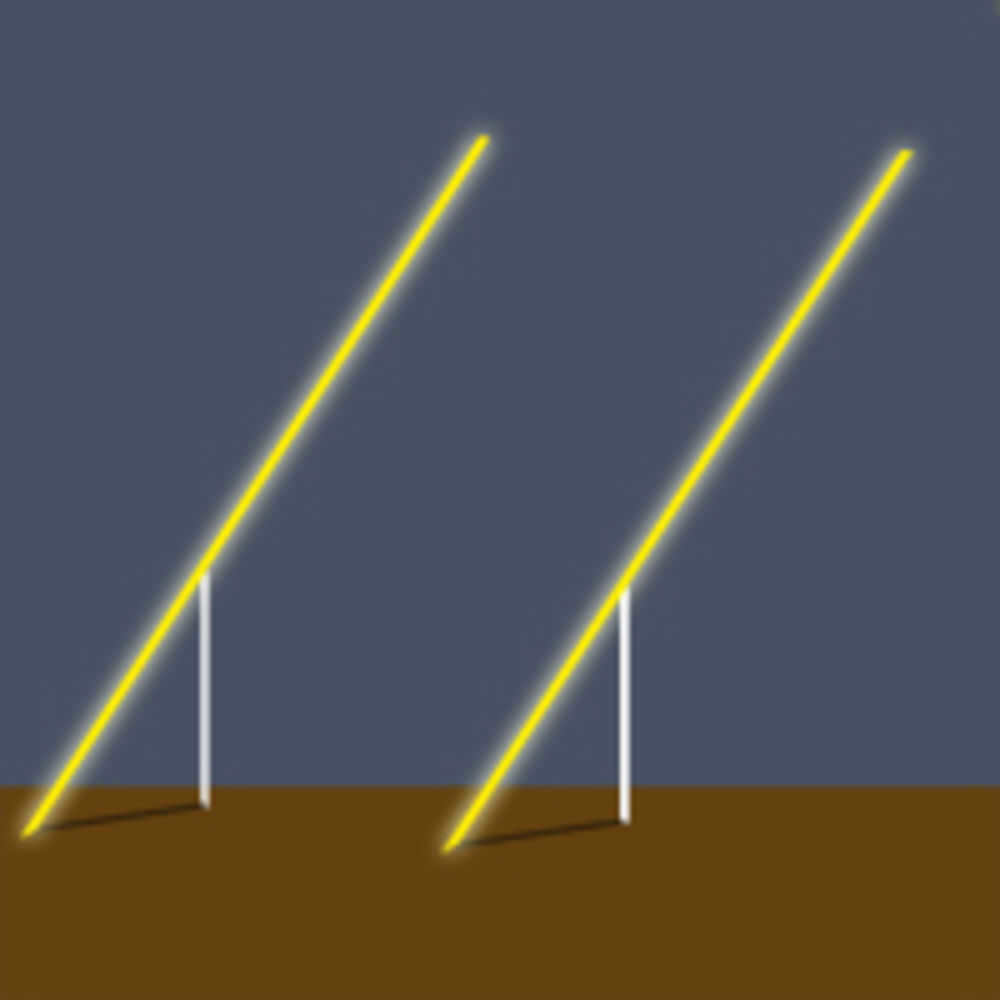
However, they do not share the same opinion. The reason for this is that the Earth has a spherical shape, rather than being flat:
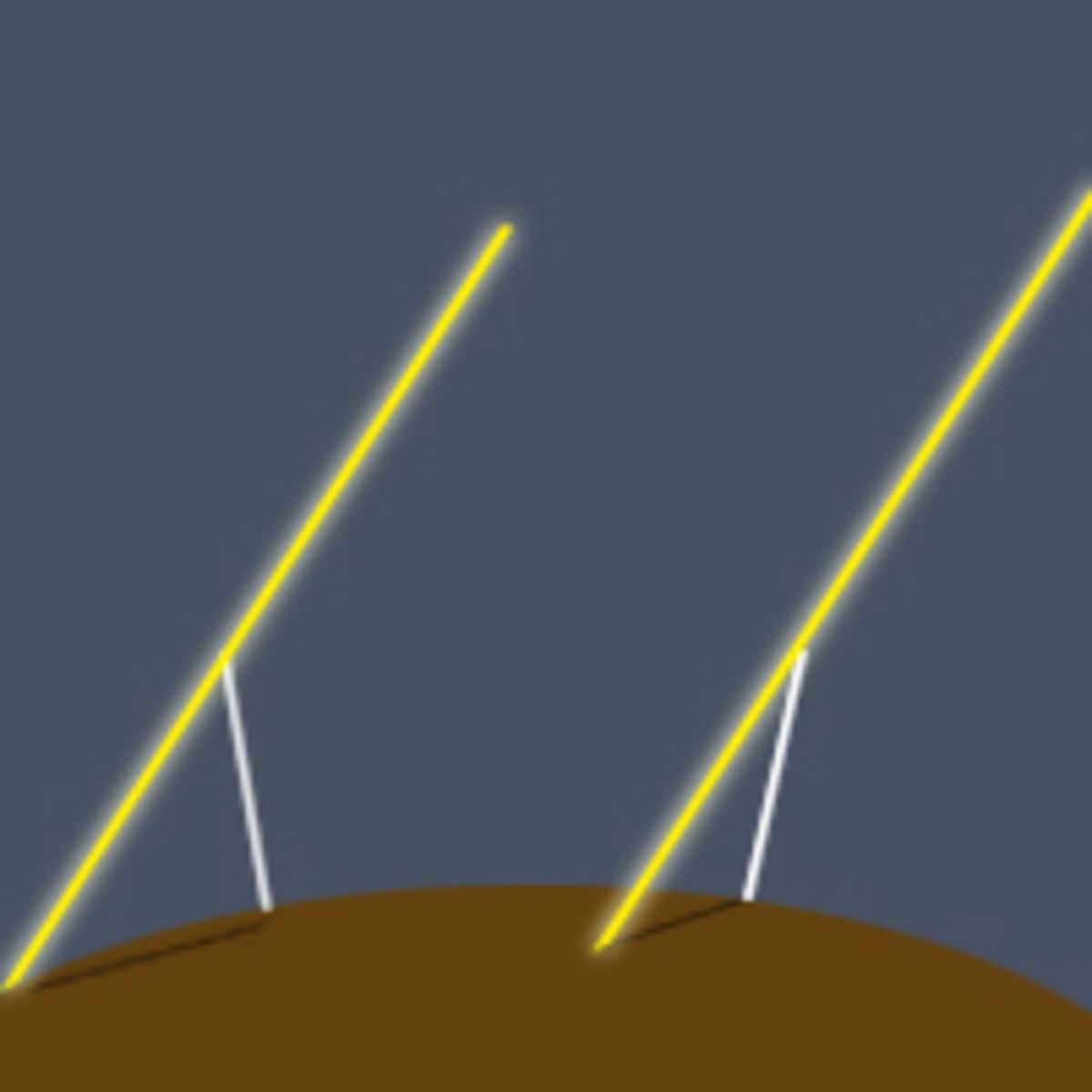
Eratosthenes (276-194 BC) employed this principle to make a relatively precise estimation of the Earth’s circumference.
5. Determining the Earth’s curvature
Standing on a level plateau, you gaze out at the distant horizon. You squint your eyes, then retrieve your preferred set of binoculars and peer through them as far as your vision allows (utilizing the binocular lenses).
Next, ascend the closest tree – the higher, the better, but be cautious not to drop the binoculars or damage the lenses. Then observe once more, strain your eyes, and examine the horizon via binoculars.
As you ascend, your field of vision expands. This is often attributed to obstacles on the ground, such as buildings or trees, that block our view. However, the true reason lies in something else entirely. Even if you were standing on a completely unobstructed plateau, you would still be able to see further from a higher elevation.
This phenomenon is actually a result of the Earth’s curvature and would not exist if the Earth were flat:


What is the maximum distance you can see from a high altitude? When it comes to a spherical Earth, elevation plays a significant role.
6. Piloting an aircraft
If you have ever embarked on a long-distance journey, especially to another country, you may have observed a couple of intriguing facts about airplanes and the Earth:
- Aircraft can travel in a nearly straight path for an extended period without falling off any edges. They can also complete a circumnavigation of the Earth without any interruptions.
- When gazing out the window during a transatlantic flight, one can often catch a glimpse of the Earth’s curvature on the horizon. The most exceptional view of the curvature used to be possible on a Concorde, but that particular aircraft is no longer in service.
7. Observe other planets
Earth stands apart from other planets, it’s a fact. We possess the gift of life, a phenomenon that has yet to be discovered on other celestial bodies. Nevertheless, there are distinctive traits shared by all planets, and it would be logical to infer that if all planets display certain behaviors or possess specific characteristics – particularly when considering planets in diverse locations or formed under varying circumstances – then our planet is no exception.
To put it differently: if numerous planets formed in diverse locations and conditions possess the same characteristic, it is plausible that our own planet possesses it as well. All our observations indicate that other planets have a spherical shape (and since we understand their formation process, it is evident why they assume that shape). Unless we have compelling evidence to suggest otherwise (which we do not), it is highly likely that our planet shares the same trait.
A flat planet (whether it be ours or any other planet) would be an astonishing discovery, as it would defy all of our current understanding of planetary formation and behavior. Such a finding would necessitate a complete overhaul of our knowledge not only about how planets form, but also about the formation of stars (as our Sun would have to exhibit very different characteristics to support the flat Earth hypothesis) and our comprehension of velocities and movements in space (such as planetary orbits and the influence of gravity). To put it succinctly, we don’t merely hypothesize that our planet possesses a spherical shape. We possess concrete evidence that confirms it.
8. The concept of time zones
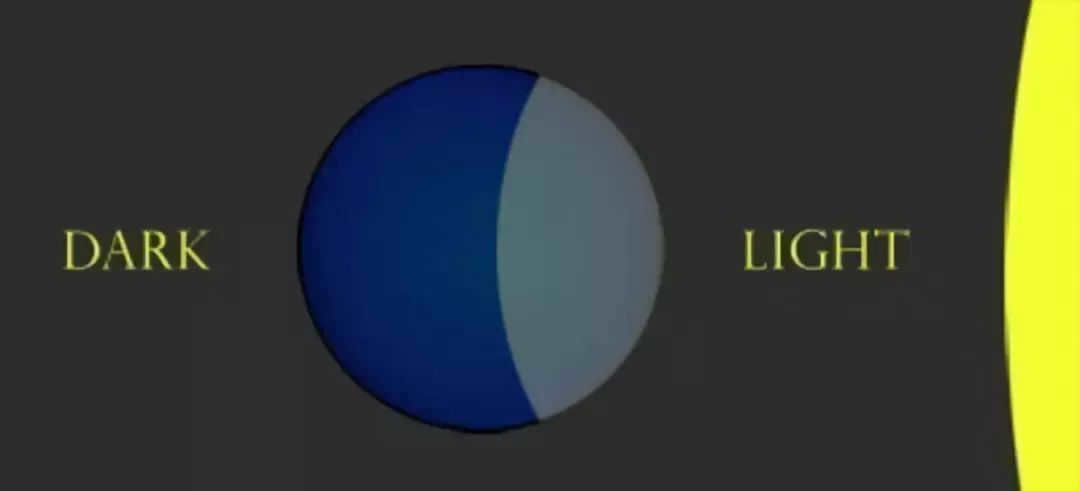
The explanation for this phenomenon can only be understood if we accept the fact that the Earth is round and rotates on its axis. When the sun shines on one part of the Earth, the opposite side is in darkness, creating time differences and time zones. This is especially true for time zones that are greater than 12 hours.
Another interesting point to consider is that if the Earth were flat and the Sun acted like a spotlight, we would still be able to see the Sun even if it wasn’t directly shining on us from above (as depicted in the image above). Just like how you can see the light from a spotlight on a stage in a theater, even if you – the audience – are sitting in darkness. The only way to have clearly defined time zones with one side in total darkness and the other in light is if the Earth is spherical.
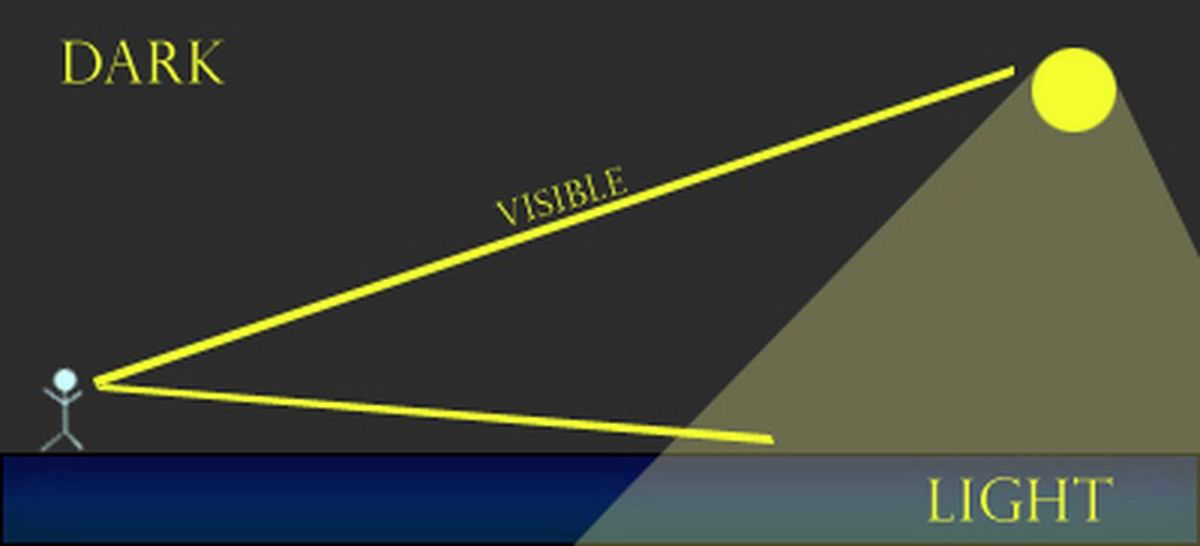
9. The Force of Gravity on Earth
Here’s a fascinating tidbit about mass: it has the ability to draw objects towards itself. The force of attraction, also known as gravity, between two objects is determined by their mass and the distance separating them. In simple terms, gravity is drawn towards the center of mass of the objects. In order to locate the center of mass, a study of the object is required.
Let’s imagine a sphere. The fascinating thing about a sphere is that no matter where you are standing on it, you will always have the same amount of sphere beneath you. It’s like an ant crawling on a crystal ball – no matter how the ant moves its legs, the shape of the surface remains unchanged. The center of mass of a sphere is, as you might guess, right at the center. This means that gravity will always pull objects on the surface of the sphere straight down towards its center, regardless of where they are positioned.
Imagine a flat surface. The point where the mass of the flat surface is concentrated is its center. As a result, any object on the surface will be pulled towards the center of the surface by gravity. This means that if you were to stand on the edge of the surface, gravity would pull you sideways towards the center of the surface, rather than straight downwards as you would typically experience when standing on Earth.
We are fairly confident that even Australians witness an apple falling downwards, not sideways. However, if you have any doubts, we encourage you to conduct an experiment by dropping something – just make sure it cannot break or harm you.
10. Images from space
In the last six decades of exploring space, we have sent satellites, probes, and astronauts into the vastness beyond our planet. While some have made their way back to Earth and others continue to journey through the solar system, a multitude of incredible images are being transmitted to our receivers on our home planet. What is striking about these images is that they all show the Earth as a sphere, a testament to its true shape. The curvature of our planet can also be observed in the countless photographs taken by astronauts aboard the International Space Station.


